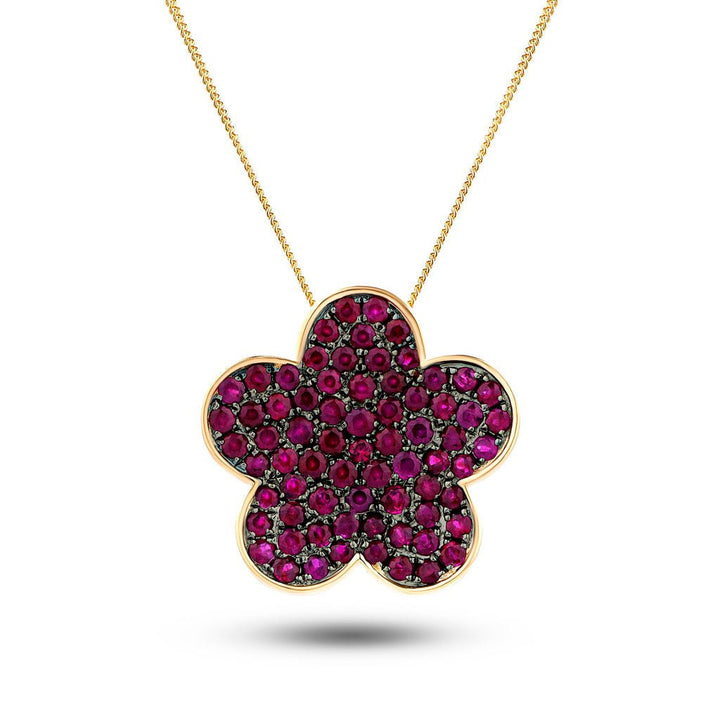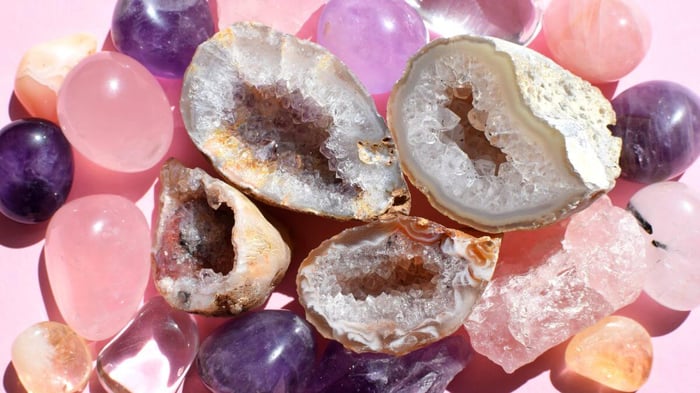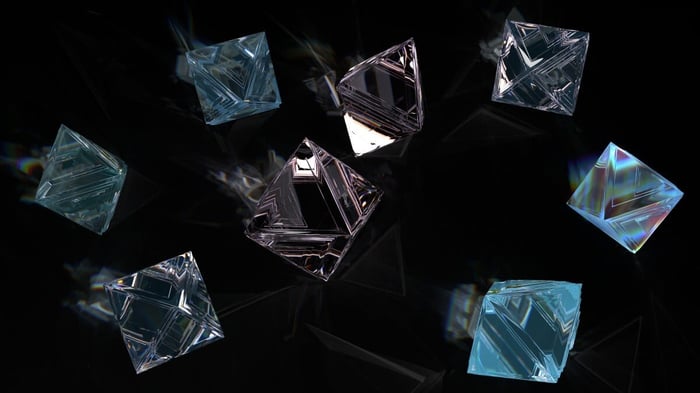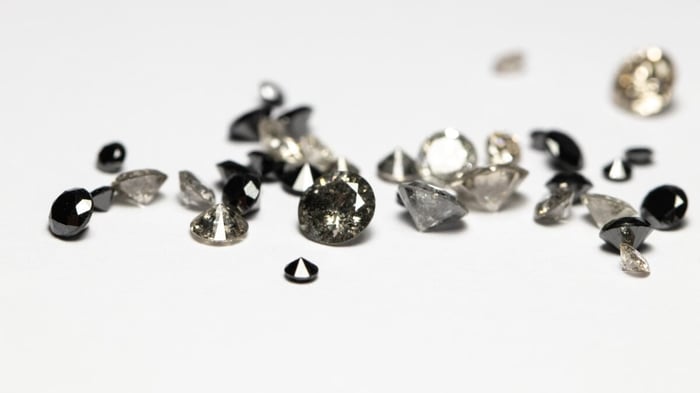Discover How Lustre, Brilliance, Dispersion, Refraction And Scintillation Create The Beauty Of Gemstones
I think it's safe to say that no matter how many times we look at a diamond or other precious stones, we're still amazed by their beauty. But why are they so special? The answer lies in a combination of physics and chemistry. In this article, we will discover the fascinating science behind the beautiful sparkle of gemstones and what causes them to shine.
The visual beauty of gemstones is related to five main factors. Those factors are as follows: Lustre (or Luster), Brilliance, Dispersion, Refraction and Scintillation. The variances between these factors give a precious stone its appeal. Most people buying fine jewellery know little to nothing about these factors. Knowing even a little will help you make more confident choices about the jewellery you buy and wear. There are many hard to read textbooks on these topics - but they can be left to the real experts! This article covers only the necessary basics.
These factors directly relate to how beautiful a gemstone looks when cut and polished for use in jewellery.
Lustre
Lustre or luster relates to how light reflects from the surface of a crystal, rock or mineral. The classification is essentially subjective. Several terms are used to describe lustre such as earthy, greasy, metallic, metallic and vitreous. Lustre does not have clear boundaries between the different appearances and, to make matters more complicated, different materials can vary between samples.
The lustre of a precious stone is the flash of white that you see as it reflects light falling onto it. The polished facets of a gemstone act as tiny mirrors, sending light back to your eyes from the gemstone's surface at the same angle as it hit the stone.
Most polished gemstones are reflective to a high degree, and the type of cutting and its quality affect the gemstone's lustre.
Brilliance
The brilliance of a stone is the amount of light reflected back to you. For example, a rough surface will reflect much less light than a highly polished, smooth surface. However, in gemstones cut and polished for jewellery, internal reflection is another aspect to consider.
When light falls onto the surfaces of the gemstone, most will be reflected back at your eyes. Some of the light will enter the gem and be reflected internally. If that light is reflected back to your eyes through a different facet of the gemstone, then you will see more sparkle. If the jewel is poorly cut, then reflected light will be sent out of the stone to a place that you can't see, such as the base of the stone. A poorly cut gemstone will tend to have less brilliance than a well-cut and polished stone.
So, in summary, the white flashes that you see coming from the inside of the gemstone are its brilliance (sparkle). The more brilliance due to well-directed internal reflections, the more sparkle you see when you look at the gemstone.
£4,888.00
Commemorate a special outing with this gorgeous diamond cross pendant necklace. Handcrafted by our most talented UK artisans. This stunning diamond cross pendant necklace showcases a large round dazzling cut diamond centre, with baguette-cut diamonds surrounded by delicate claw set… read more3.00ct Baguette & Round Claw Set Diamond Cross in 18k White Gold

£7,717.00
Dispersion
Dispersion is the process whereby light is broken up into its component colours before being reflected back out to the viewer's eyes. Jewellers refer to this aspect of a gemstone's beauty as its 'fire'. Important though it is, brilliance is only part of the story of reflected light.
When light falls onto a gemstone and is reflected within the gem, possibly several times, before exiting and being seen by you, the light hits the interior facets of the diamond at various angles. These internal reflections can lead to the colours being 'dispersed' or broken down into all the colours of the rainbow. Looking carefully at a diamond under bright light, you will almost certainly see a shimmering rainbow effect within the stone. That is the diamond's fire, and it is caused by the dispersion of the rays of light from the interior reflective surfaces of the gemstone.
Of course, coloured gemstones will tend to mask the effect, and where the effect is visible, the colour of the fire will not be every colour of the rainbow as it is in the case of a white diamond.
The cut (number of facets on the diamond) will affect the fire of the diamond, with cuts such as emerald cut having much less dispersion than a round brilliant cut diamond. The fewer the number of internal reflecting surfaces, the less dispersion takes place, and the less fire will be visible.
Gemstones with higher refractive indices will usually have higher dispersion and thus more fire. Diamonds have a very high refractive index.
£819.00
Fabulously fun jewellery can be yours in the form of this delightful flower shaped pendant with a host of gorgeous, hand-cut rubies that will twinkle wonderfully on the 18k rose gold chain crafted with care by our UK artisans. A… read more1.30ct Ruby Flower Shaped Necklace in 18k Rose Gold

£1,287.00
Refraction
Refraction occurs when light travels from the air into a denser material. As light passes from the air into the denser material of the gemstone, it is bent. The amount of bending depends upon the refractive index of the material. High refractive index materials bend the light more. Diamond has an RI of 2.42 and quartz an RI of 1.54. The higher the refractive index, the greater the dispersion, giving more fire. The bending of the light also leads to more internal reflection giving a greater degree of sparkle.
Suppose a stone is internally flawed with fractures, then light is blocked and can give dark patches in the stone fewer internal reflections. Diamonds and other gemstones sometimes have fractures filled using a material with the same refractive index as the treated stone. This treatment makes the stone look better and improves the visual display of fire and sparkle.
Scintillation
Scintillation is the effect of flashing lights seen within a gemstone as the stone, the light source or the viewer's eyes are moved.
The effect can be described as being the lustre, fire and brilliance all in motion. The effect is caused by the changes in the angle of the gemstone relative to the light source or viewer's eyes. In the case of a white diamond, the effect is mainly seen as white. In coloured gemstones, the effect tends to be of a similar but brighter colour than the base colour of the gemstone.
Some gemstones, such as amethysts, may have a secondary colour - in the case of amethyst, red, some types of garnet flash yellow or orange.
These bright flashes can look firelike, but as discussed above, fire is a feature of dispersion and is a multicoloured effect. Many people, including jewellers, confuse this effect with fire. Although this is not technically correct, it is very easy to understand the error.
Now that you know a little of the technicalities behind what makes a beautiful diamond so special, you can understand better how that beauty came to be and what skilled artisans must do to bring that beauty to your fine jewellery.
At All Diamond, we sell high-quality fine diamond jewellery and jewellery with other precious stones to make your life more beautiful. Our designers and artisans work hard to get the best from each precious stone on which they work. The results of their efforts will be with you every day that you wear one of our inspired pieces of fine jewellery. Please take a moment to browse our jewellery collections and see how we capture the fire and brilliance of diamonds for you!




